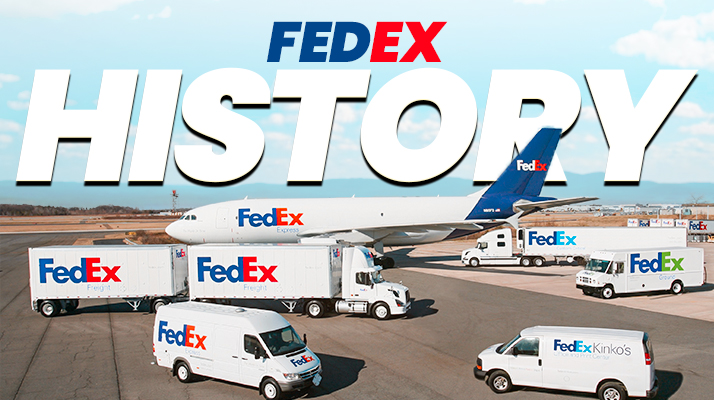Who are the cheapest package shipping companies in the united states
What Factors Affect the Cost of Shipping Packages?
- Package Weight and Dimensions
- Shipping Distance
- Delivery Timeframe
- Additional Services
Top 5 Cheapest Package Shipping Companies in the United States
- USPS
- FedEx
- UPS
- DHL
- OnTrac
Comparison of Shipping Rates and Services Offered by Each Company
- USPS
- FedEx
- UPS
- DHL
- OnTrac
Tips for Saving Money on Package Shipping
- Use Flat Rate Shipping Options
- Opt for Ground Shipping
- Consider Consolidating Packages
- Negotiate Rates with Shipping Companies
Shipping packages can often feel like a maze of costs and options. With various factors influencing prices—from package weight and dimensions to delivery timeframes—it’s essential to understand what drives up shipping costs.
This article covers the key elements affecting shipping expenses and unveils the top five most affordable shipping companies in the United States. Plus, you’ll find practical tips to save money on your next shipment.
Get ready to make informed decisions on package shipping!
1. What Factors Affect the Cost of Shipping Packages?
Understanding the factors affecting the cost of shipping packages is essential for both individuals and businesses, especially for e-commerce operations that rely heavily on efficient shipping strategies. Factors such as package weight and dimensions, shipping distance, delivery timeframe, and additional services all play a critical role in determining the final shipping costs, which can vary significantly between carriers like USPS, UPS, FedEx, and DHL. Knowing these elements can help consumers and businesses alike make informed decisions when selecting their shipping options.Package Weight and Dimensions
The weight and dimensions of a package are crucial in determining shipping costs, as most carriers, including USPS, UPS, and FedEx, use these factors to calculate rates based on dimensional weight.When evaluating shipping expenditures, businesses should understand that dimensional weight pricing takes both weight and size into account, often leading to higher charges for lighter but bulkier items. Carriers typically calculate this by multiplying the package's length, width, and height, and then dividing the total by a specific divisor, which varies between each carrier. This approach can drastically affect the bottom line for e-commerce operations.
- For instance, many shipping companies now employ a divisor of 166 for domestic shipments, which can lead to significant cost increases if a package falls into a higher dimensional weight category.
- To optimize their shipping costs, businesses might consider strategies such as adjusting packaging materials to reduce size or exploring different carriers to find the best combination of rates and services.
- Investing in better shipping software can also reveal insights on how to minimize fees through efficient handling of packages.
By focusing on dimensional weight pricing strategies, e-commerce businesses can not only save money but also make smarter shipping decisions that enhance overall customer satisfaction.
Shipping Distance
Shipping distance plays a significant role in determining shipping rates, as longer distances typically result in higher costs and longer delivery times, affecting both local and international shipping.Regarding e-commerce, shipping distance can significantly impact a business's bottom line. For example, a local shipment within the same city can often be delivered within a day and at a reasonable cost, whereas an international shipment might take several days or even weeks, leading to increased expenses and potential delays that can frustrate customers.
- Local Shipping: Generally lower rates, quicker delivery.
- International Shipping: Higher costs, extended timelines, customs clearance delays.
Choosing the right carrier becomes crucial; a business must weigh options based on distance and the ability to meet customer expectations. Ultimately, understanding how shipping distance influences costs and timelines can help e-commerce businesses make informed, strategic decisions.
Delivery Timeframe
The delivery timeframe is a key factor that impacts shipping costs, as expedited services often come at a premium, making it essential for businesses to balance speed and affordability when choosing shipping options.For instance, consider the variety of choices available:
- Express Delivery: This option prioritizes speed, allowing customers to receive their products within 1-3 business days, but typically incurs higher costs.
- Standard Delivery: A more budget-friendly choice, this service generally delivers within 5-7 business days, making it an attractive option for non-urgent shipments.
The key is to understand that these delivery methods not only affect the profit margins due to variations in shipping costs but also significantly influence consumer satisfaction. A clear strategy focused on delivery timeframe can lead to repeat business and enhanced loyalty, as customers appreciate timely arrivals.
Additional Services
Additional services such as tracking, insurance, and enhanced customer service can significantly influence shipping costs, providing value for businesses looking to ensure package security and customer satisfaction.
These services not only help in minimizing risks but also create a smoother experience for customers. For e-commerce businesses, this means more than just timely deliveries; it's about building trust with their customers. To better understand how these offerings can impact the bottom line, consider the following:
- Tracking: Customers appreciate real-time updates about their packages, leading to increased satisfaction rates.
- Insurance: Protecting high-value items can justify premium shipping costs, reducing potential losses.
- Enhanced Customer Service: Quick resolutions to shipping issues enhance overall customer experiences and foster loyalty.
Incorporating these additional services allows e-commerce businesses to differentiate themselves in a competitive market while also addressing customer expectations. Ultimately, the right mix of services not only boosts satisfaction but can also drive long-term profitability.
2. Top 5 Cheapest Package Shipping Companies in the United States
Regarding finding the cheapest package shipping companies in the United States, several key players stand out, including USPS, FedEx, UPS, DHL, and OnTrac, each offering unique rates and services that cater to varying shipping needs. By comparing these carriers, e-commerce businesses and individuals can select the most cost-effective option for their package shipping requirements, factoring in delivery speed, customer service, and additional services.USPS
USPS is often regarded as one of the most affordable options for shipping packages in the U.S., offering various services such as Priority Mail, which provides reliable delivery at competitive rates, especially for small and large packages alike.USPS’s commitment to delivering high-quality service extends beyond just affordability; it ensures that shipping is not only cost-effective but also efficient. With their extensive network and diverse shipping options, e-commerce businesses can choose the best method that aligns with their needs. Among its numerous features, the following stand out:
- Shipping Rates: USPS offers some of the most competitive rates available, particularly beneficial for small businesses aiming to minimize their operational costs.
- Delivery Speed: Many services include quick delivery options, such as two-day shipping with Priority Mail, allowing for timely fulfillment and enhanced customer satisfaction.
- Available Discounts: Businesses can access various discounts—including those for volume shipping—which further reduce costs and increase profit margins.
By utilizing USPS’s extensive services, businesses not only save on shipping costs but also improve their logistical efficiency, securing a competitive edge in the bustling e-commerce landscape.
FedEx
FedEx is known for its diverse shipping services, offering options that cater to different delivery speeds, making it a popular choice for e-commerce businesses that require reliable and efficient shipping solutions.
The extensive selection includes domestic and international express shipping, allowing customers to choose from same-day, overnight, and two- to five-day options.
Each service is designed to meet specific needs, with express choices ensuring that packages arrive quickly and in pristine condition. When comparing rates and delivery times, it’s beneficial to evaluate:
- Delivery Speed: FedEx's express services provide rapid transit times, ideal for urgent shipments.
- Cost-Effectiveness: While generally higher than standard options, the speed may justify the investment.
- International Reach: FedEx excels in global logistics, offering comprehensive tracking and customs clearance.
For both local and global shipping, utilizing FedEx enables businesses to maintain customer satisfaction through dependable service and timely deliveries.
UPS
UPS is another leading carrier that offers a variety of shipping services, known for its competitive shipping costs and reliable delivery options, making it a favored choice among e-commerce businesses.In the realm of logistics, UPS distinguishes itself through its extensive network and advanced tracking systems, which provide valuable insights into shipment statuses. E-commerce retailers often find that leveraging UPS's shipping services not only streamlines their order fulfillment processes but also enhances customer satisfaction. With options ranging from next-day air delivery to economical ground shipping, businesses can tailor their logistics to meet specific needs.
- Cost-Effective Shipping Solutions: Businesses can choose plans that align with their budget.
- Flexible Delivery Options: Varied services allow for quick and convenient shipping.
- Improved Customer Experience: Reliable tracking and timely deliveries boost consumer confidence.
This adaptability makes UPS a robust partner in the competitive e-commerce landscape.
DHL
DHL specializes in international shipping and is recognized for its expansive global network, offering services that are ideal for e-commerce businesses looking to reach customers worldwide.With a reputation for reliability and efficiency, this logistics giant provides competitive rates tailored to meet the needs of various businesses. E-commerce companies can benefit significantly from DHL’s quick delivery options, ensuring packages arrive at their destinations in a timely manner. This is particularly important in a fast-paced online market where customer expectations are high.
Plus those advantages, DHL excels in customer service, providing dedicated support to resolve any issues that may arise during the shipping process. By choosing DHL, businesses can enhance their operational efficiency, making it easier to manage international logistics effectively.
- Wide range of delivery options
- Real-time tracking for better transparency
- Expert advice on customs regulations
OnTrac
OnTrac’s shipping rates are often lower than those of major carriers, making it a viable option for businesses that primarily ship locally while maximizing their shipping strategy.
OnTrac’s shipping rates are often lower than those of major carriers, making it a viable option for businesses that primarily ship locally while maximizing their shipping strategy.
OnTrac is an emerging player in the shipping industry, offering competitive shipping rates, particularly for local delivery, making it an attractive option for e-commerce businesses operating in specific regions.
This is especially pertinent for e-commerce businesses that require cost-effective solutions to reach their customers quickly and efficiently. By leveraging OnTrac's services, these businesses can capitalize on lower shipping costs without sacrificing reliability. With a focus on regional shipping, OnTrac stands out among larger carriers by providing:
- Flexible delivery options that cater to diverse timeframes.
- Speedy transit times that help meet customer expectations.
- Customized solutions tailored to the needs of small to medium-sized enterprises.
These features can be pivotal when a business is aiming to enhance its local presence and provide a high-quality customer experience while keeping expenses manageable.
3. Comparison of Shipping Rates and Services Offered by Each Company
In terms of shipping rates, USPS offers a variety of services tailored to different needs, including flat-rate options that can be particularly beneficial for e-commerce businesses.
In terms of shipping rates, USPS offers a variety of services tailored to different needs, including flat-rate options that can be particularly beneficial for e-commerce businesses.
A thorough comparison of shipping rates and services offered by carriers such as USPS, FedEx, UPS, DHL, and OnTrac reveals significant differences that can greatly affect overall shipping costs for both individuals and e-commerce businesses.USPS
In terms of shipping rates, USPS offers a variety of services tailored to different needs, including flat-rate options that can be particularly beneficial for e-commerce businesses. These flat-rate services allow sellers to ship items without worrying about weight, making budgeting straightforward and predictable for small to medium-sized enterprises.USPS provides several shipping options, each designed to cater to specific needs and timelines:
- Priority Mail: Offers delivery in 1-3 business days, with prices starting at around $8.70, depending on weight and distance.
- Priority Mail Express: The fastest option, guaranteeing overnight delivery with rates starting at $26.35.
- First-Class Package Service: Ideal for lightweight packages under 16 ounces, with rates beginning around $4.00.
In comparison, carriers like FedEx and UPS often charge more for similar services, particularly with larger packages. The flexibility of USPS's flat-rate shipping can save e-commerce businesses considerable amounts, enabling them to offer competitive shipping rates to customers while maintaining healthy margins.
FedEx
FedEx provides a range of shipping options, each with varying rates that cater to different delivery speed requirements, making it crucial for businesses to choose wisely based on their shipping needs.
This choice can significantly affect their overall logistics strategy and budget. Among the offerings, you'll find options like FedEx Express, which guarantees faster delivery, typically within one to three business days, and a more economical choice in FedEx Ground for less time-sensitive shipments. To better evaluate cost-effectiveness, companies should compare these services with USPS and UPS rates, as both also provide various shipping tiers.
- Express services: Ideal for urgent deliveries with guaranteed arrival times.
- Standard services: Suitable for regular shipping that is less time-sensitive.
By understanding these differences, businesses can optimize their shipping practices, ensuring timely deliveries without overspending.
UPS
UPS offers various delivery options, and its rates can be competitive, particularly for heavier packages, making it a common choice for businesses focusing on bulk shipping.With a wide range of services tailored to fit diverse shipping needs, the carrier provides different pricing tiers based on package weight and desired delivery speed. UPS's pricing structure is designed to cater to both urgent deliveries and more economical choices, thus offering flexibility for shippers.
- For lighter packages, their rates may be slightly higher than competitors like FedEx or USPS.
- As weight increases, UPS often becomes more cost-effective, especially for businesses sending items in bulk.
- They offer various expedited options, while still maintaining competitive prices.
To make an informed decision, it's essential to compare these rates not only against UPS but also to the offerings of other major carriers, ensuring businesses select the most cost-efficient route for their shipping needs.
DHL
When comparing DHL, it's essential to note that they excel in international shipping, offering competitive rates that are appealing for businesses looking to expand their reach beyond U.S. borders.DHL's commitment to efficient logistics is evident in their wide range of services tailored specifically for cross-border movement. This global leader in shipping offers comprehensive solutions that include express delivery, freight transportation, and parcel services, catering to various business needs.
- Their express service ensures fast shipment times, often delivering packages within a few days, making them ideal for urgent deliveries.
- DHL boasts extensive coverage, reaching over 220 countries, which is a significant advantage for companies seeking to tap into international markets.
- When compared to domestic carriers, DHL stands out with their transparent pricing structure and expert handling of customs regulations, ensuring a smooth transition for goods moving across borders.
Through strategic partnerships and a robust network, DHL continues to maintain its position as a forerunner in global shipping, making them an excellent choice for businesses aiming to enhance their international presence.
OnTrac
OnTrac’s shipping rates are often lower than those of major carriers, making it a viable option for businesses that primarily ship locally.By choosing this service, companies can significantly reduce their shipping expenses while still enjoying reliable and efficient delivery. This makes OnTrac an attractive choice for small to mid-sized businesses that may be seeking budget-friendly alternatives in a competitive market.
- Lower rates enable better profit margins for local shipments.
- Fast delivery options ensure timely service without breaking the bank.
- Flexible shipping solutions cater to varying business needs.
As a comparison, when looking at service rates from larger carriers, the cost differential can be quite significant. For instance, a typical shipment weighing 10 pounds may cost a business substantially less when routed through OnTrac than through more prominent alternatives.
This cost-effectiveness not only enhances operational efficiency but also positions local businesses to thrive.
4. Tips for Saving Money on Package Shipping
For individuals and businesses alike, implementing effective strategies for saving money on package shipping can lead to significant cost reductions, especially in the competitive landscape of e-commerce.
For individuals and businesses alike, implementing effective strategies for saving money on package shipping can lead to significant cost reductions, especially in the competitive landscape of e-commerce.
For individuals and businesses alike, implementing effective strategies for saving money on package shipping can lead to significant cost reductions, especially in the competitive landscape of e-commerce. By utilizing flat-rate shipping options, opting for ground shipping, consolidating packages, and even negotiating rates with shipping companies, customers can maximize their savings while ensuring timely delivery.Use Flat Rate Shipping Options
Utilizing flat-rate shipping options can be a cost-effective solution for businesses looking to ship various package sizes without incurring high costs based on weight and distance, ultimately providing a straightforward approach to budgeting that helps businesses thrive in a competitive market.
Utilizing flat-rate shipping options can be a cost-effective solution for businesses looking to ship various package sizes without incurring high costs based on weight and distance, ultimately providing a straightforward approach to budgeting that helps businesses thrive in a competitive market.
Utilizing flat-rate shipping options can be a cost-effective solution for businesses looking to ship various package sizes without incurring high costs based on weight and distance, ultimately providing a straightforward approach to budgeting that helps businesses thrive in a competitive market.One of the main advantages of this pricing model is that it simplifies shipping costs, making it easier for companies to plan their budgets. Customers appreciate knowing exactly what they will pay upfront, removing the uncertainty of fluctuating shipping fees based on dimensional weight.
Flat-rate shipping is particularly beneficial for:
- Small business owners shipping frequently, who want predictable expenses.
- E-commerce businesses that offer free shipping options to attract customers, while retaining profitability.
- Companies that send out promotional materials, where weight can vary significantly.
When comparing options from different carriers, such as USPS and UPS, it’s clear they each offer unique benefits. For instance, one carrier may have competitive rates for domestic shipping, while another excels in international deliveries, making it essential for businesses to evaluate their specific needs and shipping volume to select the best fit, ensuring they maximize efficiency and cost-effectiveness.
Opt for Ground Shipping
Opting for Ground shipping instead of express services like Priority Mail can lead to significant cost savings, particularly for non-urgent packages, making it a smart choice for budget-conscious consumers and businesses.Plus financial benefits, ground shipping often boasts a reliable delivery timeframe that appeals to various e-commerce businesses, particularly those using platforms like Shippo. By considering factors such as distance, size, and weight of parcels, these businesses can provide customers with a clearer understanding of when to expect their deliveries.
- On average, ground shipping takes between 1 to 5 business days, depending on the location.
- This duration can be a striking contrast to the expedited shipping times, which usually demand a premium price.
For retailers aiming to enhance their customer satisfaction and streamline their supply chain, integrating ground shipping into their logistics strategy can serve as a powerful tool, especially when utilizing 3PL services. Specifically, e-commerce fulfillment platforms can leverage this option to optimize operational costs while maintaining effective service.
The blend of affordability and dependable delivery through ground shipping makes it an asset for businesses focused on growth.
Consider Consolidating Packages
Consolidating packages for shipment can dramatically reduce shipping costs, making it an efficient strategy for e-commerce businesses that frequently send multiple items.By combining items into single shipments rather than sending them separately, online retailers can take advantage of bulk shipping rates. This practice not only decreases postage expenses but also minimizes the environmental impact associated with transportation.
For instance, consider a business that regularly ships individual items to customers; instead of dispatching 10 separate packages, which incurs higher fees, they can group these into one shipment. Such consolidation leads to streamlined operations and enhances customer satisfaction by providing quicker delivery times.
- Efficient use of space within shipping containers can also lead to lower costs associated with packaging materials.
- E-commerce firms can pass savings onto consumers or reinvest them into other aspects of the business.
Ultimately, this strategic approach fosters a more sustainable and economically sound shipping process, particularly beneficial for subscription box services, making it a win-win for both the business and its clients.
Negotiate Rates with Shipping Companies
Negotiating rates with shipping companies like FedEx and DHL can often yield valuable discounts, especially for businesses that ship at high volumes, making it a worthwhile effort to reduce overall shipping costs.For many companies, the significance of securing better shipping rates extends beyond mere savings—it can directly impact profitability and customer satisfaction. Understanding the dynamics of negotiating shipping rates with platforms like Pirate Ship is crucial, as it allows enterprises to build stronger relationships with carriers while also ensuring they have the flexibility needed to adapt to fluctuating market conditions.
Here are some strategies to consider:
- Research: Start by gathering information on current retail rates from various carriers to establish a baseline for negotiations.
- Build Volume: If possible, consolidate shipping needs to increase volume, as larger volumes can lead to better deals.
- Loyalty Matters: Show commitment to a carrier by consistently choosing them for your shipping needs, as loyalty can lead to exclusive rate offers.
- Ask for Flexibility: Don’t hesitate to request adjustments based on seasons or specific circumstances that could affect shipping demands.
By applying these tactics, businesses can effectively navigate the complex landscape of shipping logistics, ultimately securing more favorable terms with carriers like UPS and USPS.
5. Conclusion
Understanding the various factors that affect shipping costs, as well as exploring the cheapest shipping companies available, including shippo and Pirate Ship, enables individuals and businesses to make informed decisions when selecting their shipping options. By utilizing strategies for saving money on package shipping and being aware of the services offered by different carriers, one can optimize their shipping strategy to ensure cost-effectiveness and efficiency.Effective shipping management requires a proactive approach whereby individuals assess not only the prices but also the delivery times and reliability of different options, including small packages. This comprehensive understanding allows for substantial savings over time, as it minimizes unnecessary expenses and optimizes logistics.
Here are some key points to consider:
- Comparison Shopping: Regularly compare rates from multiple carriers, including USPS and FedEx, to understand competitive pricing.
- Negotiation: Engage with shipping companies like UPS or brokers to negotiate better rates based on shipping volume.
- Scheduling: Consider off-peak times for shipments, especially during the Kickstarter campaign season, to take advantage of lower rates.
By adopting these strategies, one can significantly enhance their shipping efficiency and savings!







